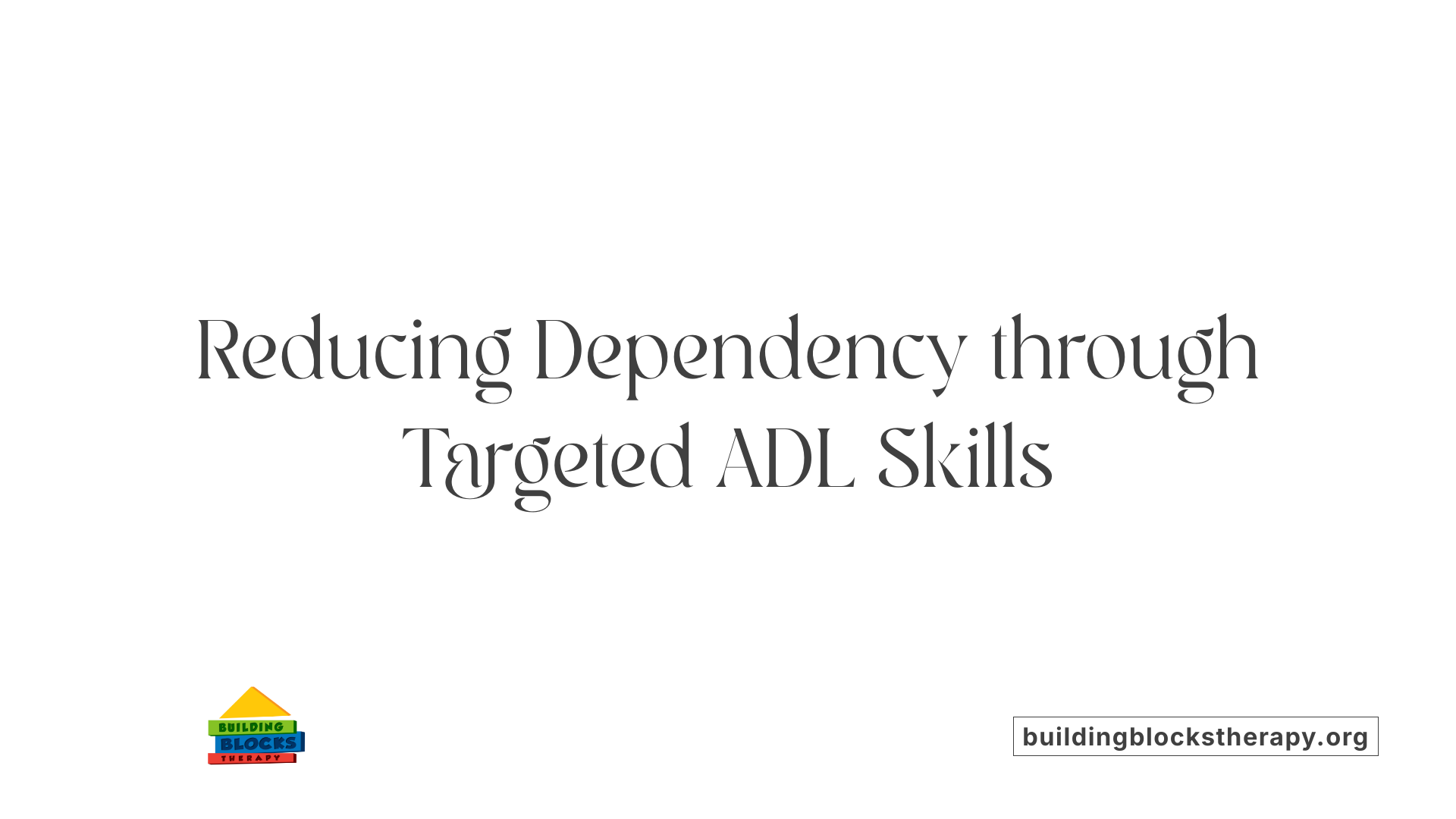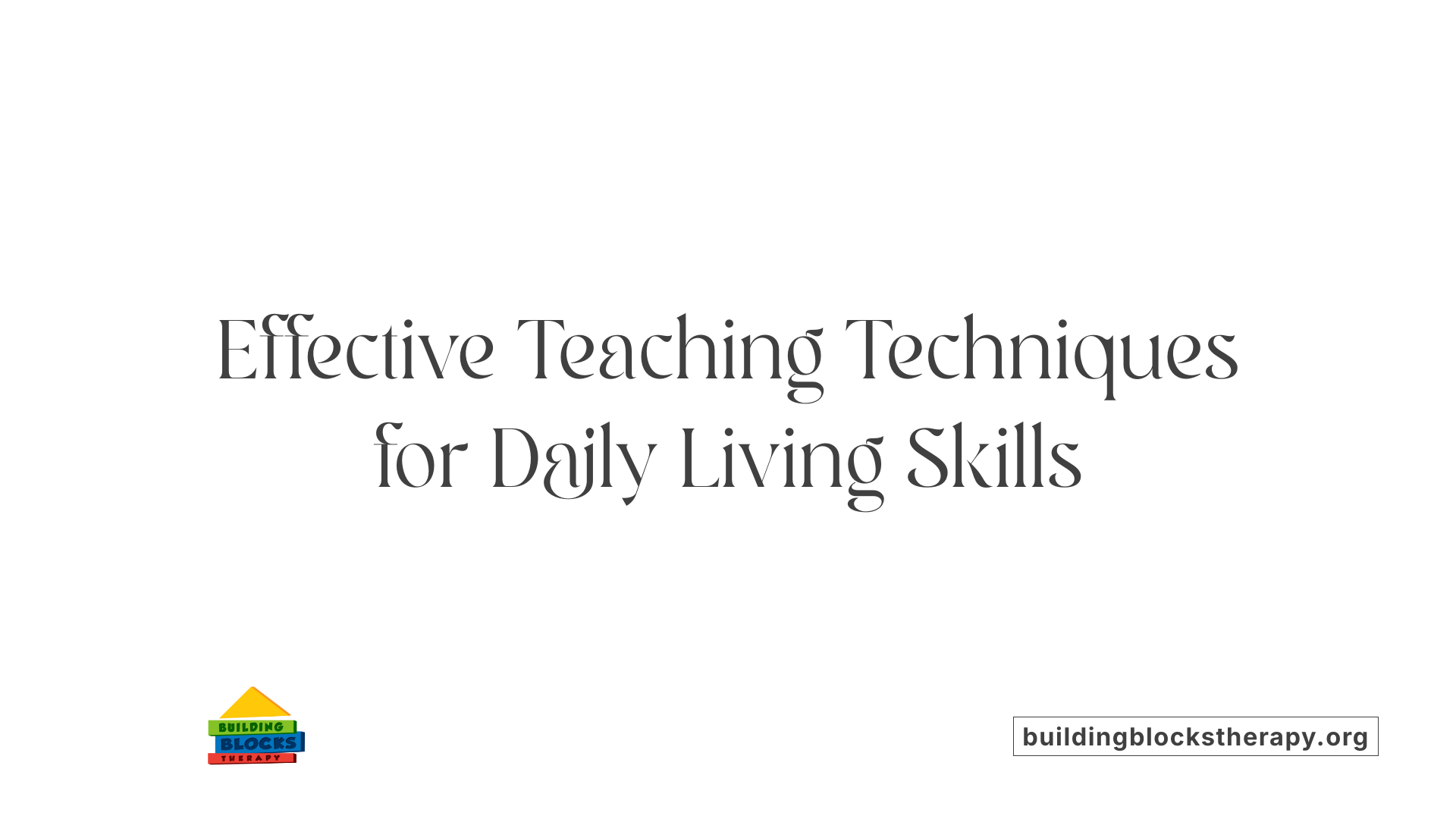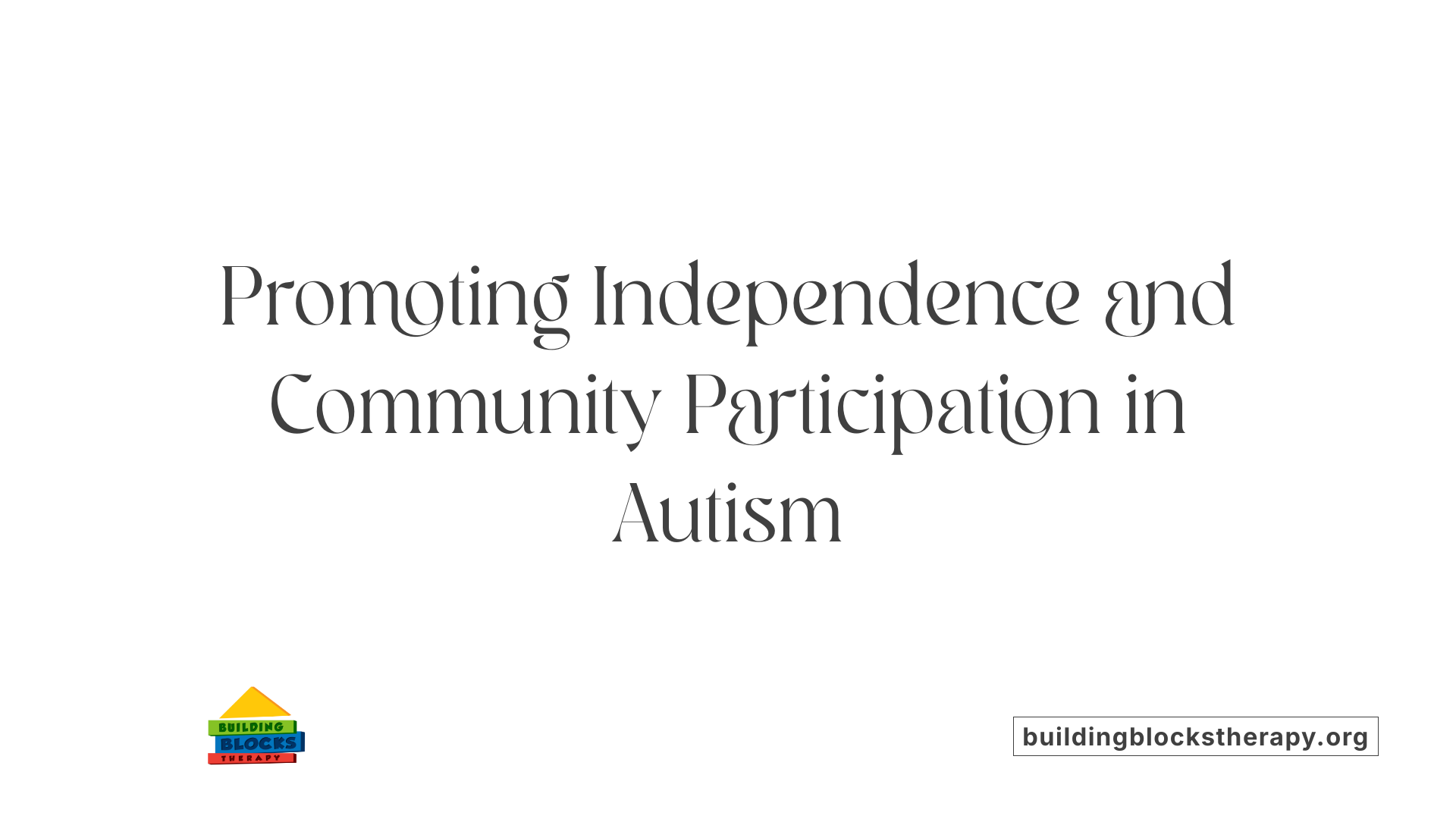Understanding the Importance of Daily Skills in Autism Support
Teaching daily living skills through ABA therapy is a cornerstone of empowering individuals with autism to achieve greater independence and improve their quality of life. This approach, rooted in evidence-based practices, focuses on systematically teaching essential self-care and functional skills tailored to each learner's unique needs.
Goals of Activities of Daily Living (ADL) Training in ABA

What are the goals of activities of daily living (ADL) training in ABA therapy?
The primary aim of ADL training in ABA therapy is to help individuals with autism gain the ability to perform essential self-care tasks independently. These tasks include dressing, grooming, bathing, toileting, and eating. By focusing on these foundational skills, therapy encourages greater self-sufficiency, allowing individuals to participate more fully in daily routines.
Teaching these skills involves breaking them down into manageable, small steps through task analysis. Therapists use positive reinforcement to motivate and encourage progress, making each success a building block toward independence.
A significant goal is to enable people with autism to engage actively in daily life at home, school, and in the community. As skills improve, individuals often demonstrate increased confidence and self-esteem, which can lead to more meaningful participation in social and community activities.
Reducing challenging behaviors linked to dependency or frustration is another critical purpose. For example, teaching appropriate ways to express needs or discomfort provides alternatives to problem behaviors.
Progress is closely monitored using data collection tools such as checklists, visual supports like schedules, and feedback from caregivers. Regular assessment helps adjust goals and strategies, ensuring that interventions are personalized and effective.
Overall, ADL training aims to foster independence and improve quality of life. By empowering individuals to manage self-care routines successfully, ABA therapy supports a more autonomous and engaging life, promoting better integration into society.
Teaching Strategies and Techniques in ABA

How do you teach daily living skills to individuals with autism using ABA?
Teaching daily living skills with ABA involves a systematic and personalized approach that focuses on individual needs. The process begins with thorough assessments, including direct observation and caregiver interviews, to identify the current skill levels and areas needing support.
Once the assessment is complete, educators set measurable, achievable goals tailored to each person’s abilities. Implementing structured curricula like the Life Skills Series, Stepping Out Curriculum, or Teaching to the Standards helps provide a clear roadmap for skill development.
A central strategy in ABA is task analysis—breaking down complex activities into smaller, manageable steps. For example, teaching morning grooming might involve steps like brushing teeth, washing face, and combing hair. These tasks are then taught sequentially, allowing learners to master each step through repetition.
Visual supports such as checklists, schedules, and picture cards play a vital role. These tools offer visual cues that make learning more accessible, especially for individuals who learn best with visual aids. Using visual schedules helps children anticipate what comes next, promoting independence and reducing anxiety.
Effective teaching also relies heavily on prompting and reinforcement strategies. Prompts—like hand-over-hand guidance or visual cues—are used to initiate correct responses. As skills improve, prompts are gradually faded to encourage independence. Positive reinforcement, such as praise, tokens, or preferred items, encourages continued effort and successful skill acquisition.
To enhance engagement and skill mastery, therapists often incorporate specialized tools such as Boardmaker® Software, Tasks Galore, or Life Skill Readers. These resources create engaging visual and tangible learning materials tailored to each child's interests and needs.
Progress monitoring is essential for evaluating effectiveness. Data collection methods track how often and how well a skill is performed. Regular analysis of this data guides adjustments in teaching strategies and ensures that the learner is moving toward independence.
By combining these evidence-based teaching strategies, ABA supports meaningful learning of daily living skills. Over time, learners gain confidence and independence, which improves their overall quality of life and ability to participate in everyday activities.
Core ABA Teaching Strategies for Daily Living Skills

What strategies are effective in teaching daily living skills through ABA therapy?
Effective methods in ABA therapy focus on personalized, systematic instruction. One fundamental approach is task analysis, which involves breaking down complex daily routines—such as dressing or cooking—into smaller, manageable steps. This helps children who struggle with sequencing, attention, and working memory to learn each component at their own pace.
Prompts are used to guide children through tasks, with supportive cues like physical guidance or visual prompts. As mastery increases, prompts are gradually faded until the child performs the skill independently—a process known as prompt fading.
Positive reinforcement is critical. When a child successfully completes a step or task, they receive praise, a tangible reward, or reinforcement to motivate future learning and to strengthen desirable behaviors.
Practicing skills in real-world settings, such as a grocery store or kitchen, helps promote generalization—ensuring skills transfer across different environments. Engaging in activities like money management exercises not only teaches financial skills but also enhances confidence and independence.
Supporting children through transitions with visual aids, like visual schedules, reduces anxiety by clarifying what comes next and preparing them for change. Additionally, incorporating social-emotional learning strategies, such as modeling social interactions and building rapport, helps children develop communication and social skills essential for daily independence.
In summary, combining structured task analysis, visual supports, reinforcement, and real-life practice creates a comprehensive and effective approach for teaching daily living skills in ABA therapy. These strategies are designed to promote lasting independence, confidence, and improved quality of life for children on the autism spectrum.
Examples of Daily Living Skills Taught via ABA

What are some examples of daily living skills for individuals with autism?
Daily living skills are fundamental activities that support an individual's independence and ability to function effectively in everyday life. For children and adults with autism, mastering these skills can be transformative, helping them participate more fully in home, school, and community settings.
Some essential daily living skills include personal hygiene and grooming, such as brushing teeth, bathing, and dressing. These are often taught using visual schedules, checklists, and reinforcement strategies to build routines and routine mastery.
Cooking and household chores are also common focus areas. Tasks like preparing simple meals, laundry, cleaning, and organizing are broken down into manageable steps through task analysis. Role-playing and real-world practice ensure skills are generalized across different settings.
Managing money and shopping involves understanding currency, making transactions, and budgeting. These skills are usually taught through simulated activities or supervised shopping trips to help individuals gain confidence and independence.
Using public transportation and navigating community environments are vital for social participation. ABA programs incorporate travel training, modeling, and social stories to teach route planning, safety rules, and appropriate behavior in public spaces.
Teaching these skills often involves visual supports, prompts, reinforcement, and data collection to monitor progress. Tailoring instruction to each person's current abilities ensures effective learning and continued development.
Overall, fostering independence in daily living activities empowers individuals with autism, leading to increased self-esteem, reduced caregiver stress, and greater engagement in community life. The structured, individualized approaches employed in ABA therapy support these critical skill areas, helping individuals lead more autonomous and fulfilling lives.
The Significance of Teaching Daily Living Skills in Autism Support

Why is teaching daily living skills important for individuals with autism?
Teaching daily living skills holds essential significance for individuals with autism. It directly encourages independence and self-reliance by equipping them with the ability to perform everyday tasks such as dressing, bathing, preparing meals, managing money, and navigating community settings.
These skills are fundamental in closing the gap between autistic individuals and their neurotypical peers. When children and adults acquire these capabilities early through structured instruction, they are more prepared for adult life, including employment, community involvement, and independent living.
Effective teaching methods include visual supports—like checklists and schedules—task analysis that breaks complex activities into manageable steps, and positive reinforcement to motivate progress. These strategies foster confidence and help develop a sense of competence.
Beyond skill development, learning daily living skills enhances self-esteem and reduces dependence on caregivers. As individuals become more capable of handling their routine needs, they are more likely to participate fully in social and community activities.
Overall, focusing on these skills contributes to a higher quality of life, greater autonomy, and smoother transitions into adulthood. Supporting the learning of daily living skills is therefore a vital aspect of autism support programs, helping individuals live more independent and fulfilling lives.
More about the importance of daily living skills for autism:
- Search query: Importance of daily living skills for autism
- Recognized as a core part of intervention, these skills promote lifelong independence.
- Consistent, individualized teaching accelerates mastery and confidence.
- Integral to improving community participation and societal inclusion.
Benefits of ABA in Developing Independence and Well-being

What are the benefits of ABA therapy in improving self-care, communication, social skills, and emotional regulation?
ABA therapy, or Applied Behavior Analysis, is a scientifically validated approach that helps children with autism learn essential life skills. It emphasizes improving areas such as communication, social interactions, self-care, and problem-solving abilities. To teach communication, techniques like picture exchange communication systems (PECS), sign language, role-playing, and social stories are used.
When it comes to social skills, ABA employs group activities, modeling, imitation, and teaching children to recognize and interpret social cues. These cues include facial expressions, body language, and tone of voice.
In addition, ABA supports the development of organizational skills through visual schedules, charts, and time management strategies. This structured approach helps children better manage daily routines.
By practicing these skills in real-world settings, like grocery shopping or using public transportation, children gain independence. Problem-solving is also taught through specific exercises, scenarios, and reinforcement, fostering critical thinking.
Overall, ABA therapy promotes positive behaviors and attitudes by using reinforcement techniques that encourage progress and confidence. These methods collectively lead to better self-care, improved communication, enhanced social abilities, and emotional regulation, contributing to a more fulfilling and autonomous life for individuals with autism.
Looking Ahead: The Future of Teaching Daily Living Skills in Autism Support
As research continues to reinforce the effectiveness of ABA therapy, its role in teaching daily living skills becomes ever more vital. Personalized, data-driven approaches ensure that individuals with autism develop the skills necessary for a more independent, satisfying life. Through ongoing innovation and collaboration among therapists, families, and communities, the goal of empowering individuals with autism to fully participate in their daily lives becomes increasingly achievable.
References
- Building Independence: Teaching Life Skills Through ABA Therapy
- How ABA Therapy Helps with Daily Living Skills
- Key Life Skills Taught in ABA Therapy for Kids
- Life skills for autism | Autism Speaks
- How ABA Therapy Helps Build Daily Living Skills for Autism
- 10 Ways ABA Therapy Can Help with Life Skills
- 4 Ways to Teach Essential Life Skills in Any School Setting - n2y
- Blog | n2y
- Daily Living Skills: A Key to Independence for People with Autism
- Daily living skills in individuals with autism spectrum disorder from 2 ...






